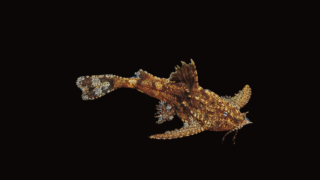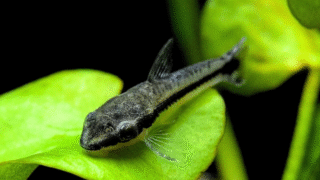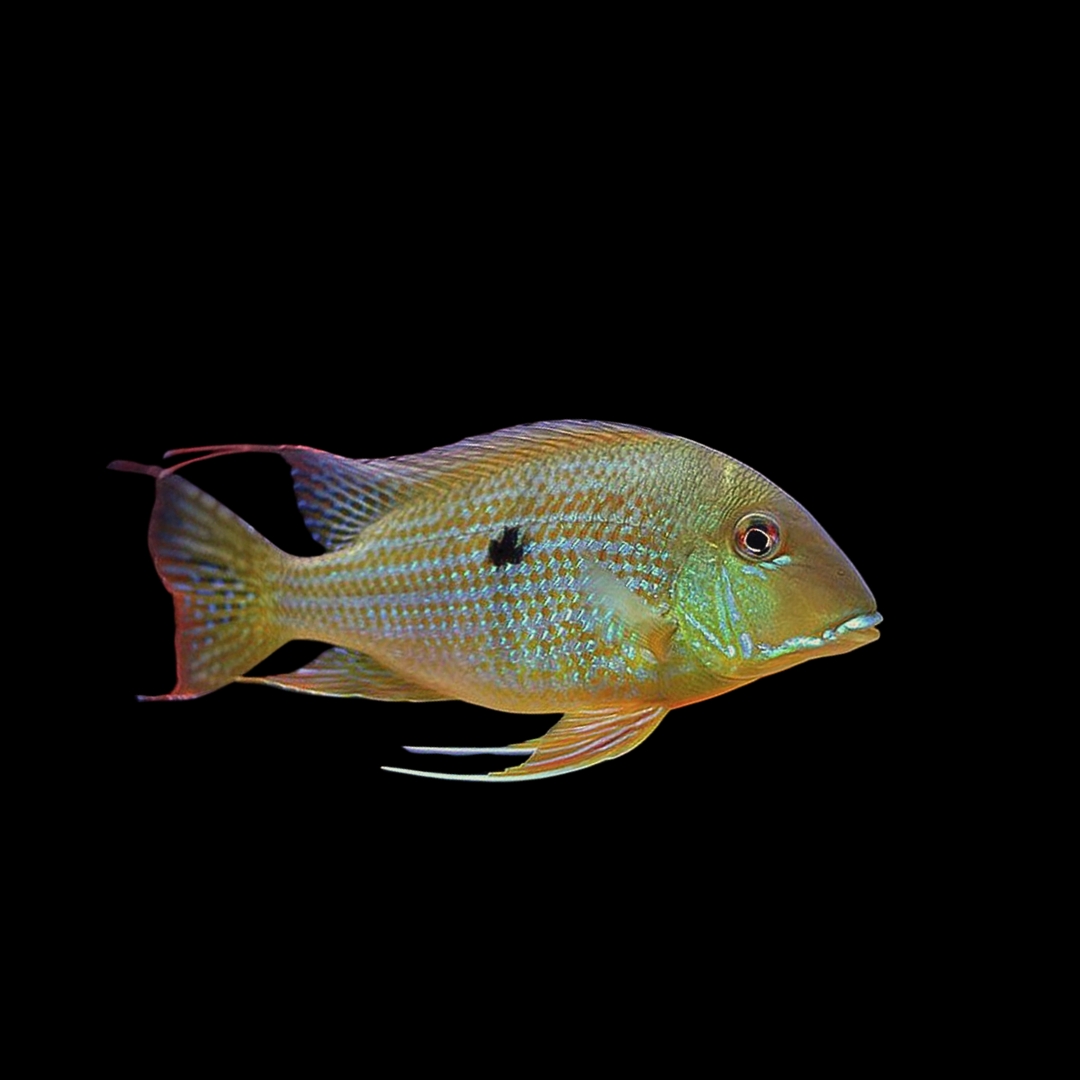解説 / Description
アオノメハタは、暗褐色の体に無数の青い斑点が輝く、非常に美しい大型のハタです。その頑健さから観賞魚として人気がありますが、同時に多くの矛盾を内包する魚でもあります。飼育下では極めて攻撃的な捕食者であり、ハワイではサンゴ礁の生態系を脅かす侵略的外来種として、また多くの地域では重篤な食中毒「シガテラ」の主要な原因魚として知られています。飼育にはその美しい姿の裏にある、どう猛な性質と潜在的なリスクを十分に理解する必要があります。 The Peacock Grouper (*Cephalopholis argus*) is a stunningly beautiful large grouper, featuring a dark brown body covered in hundreds of iridescent blue spots. While popular as a hardy aquarium fish, it is a species of profound contradictions. In captivity, it is an extremely aggressive predator. In Hawaii, it is a destructive invasive alien species threatening reef ecosystems, and in many regions, it is known as a primary vector for severe ciguatera poisoning. Its keeping requires a thorough understanding of the fierce nature and potential risks that lie behind its beautiful appearance.
基本情報 / Basic Information
| 学名 / Scientific Name | Cephalopholis argus (Bloch & Schneider, 1801) |
|---|---|
| 通称 / Common Name | アオノメハタ, Roi (ハワイでの呼称)Peacock Grouper, Roi, Bluespotted Grouper |
| 分類 / Family | ハタ科 (Serranidae)Serranidae |
| 英名 / English Name | Peacock Hind, Roi, Bluespotted Grouper, Celestial Grouper |
| 分布 / Distribution | インド-太平洋(紅海、アフリカ東岸から南日本、オーストラリア、フランス領ポリネシアまで)。ハワイには侵略的外来種として定着。Indo-Pacific (Red Sea, East Africa to Southern Japan, Australia, and French Polynesia). Established as an invasive alien species in Hawaii. |
| 最大体長 / Max Size | 約60cmApprox. 60 cm |
| 寿命 / Lifespan | 10年以上(ハワイでは平均11.5歳で性転換する記録あり)Over 10 years (records from Hawaii show sex change at an average age of 11.5 years) |
飼育環境 / Aquarium Environment
| 水槽サイズ / Tank Size | 最低でも750L(幅180cmワイド水槽や200cm規格水槽)、成魚の長期的な飼育にはそれ以上の超大型水槽が必須です。A minimum of 750L (200 gallons), such as an 180cm wide or 200cm standard tank, is required. For the long-term well-being of an adult, an even larger custom-built system is essential. |
|---|---|
| 水温 / Temperature | 24℃〜28℃ |
| 水質 / Water Quality | 比重: 1.020-1.025, pH: 8.1-8.4。非常に大きな生物学的負荷をかけるため、高性能なプロテインスキマーと強力なろ過システムが不可欠です。Specific Gravity: 1.020-1.025, pH: 8.1-8.4. Due to its very high bioload, a high-performance protein skimmer and a robust filtration system are indispensable. |
| レイアウト / Layout | 大きな個体が完全に隠れることができる、多数の洞窟や岩棚をライブロックで組みます。岩は崩れないよう底面に直接、安定させて設置する必要があります。Create numerous large caves and ledges with live rock that allow the fish to hide completely. Rocks must be placed securely on the bottom of the tank to prevent collapse. |
| 注意点 / Precautions | 【リーフタンク不向き】サンゴは食べませんが、口に入るサイズの魚やエビ、カニは全て捕食します。魚とライブロックのみのFOWLR水槽での単独飼育が基本です。[NOT REEF SAFE] While it does not eat corals, it will consume any fish, shrimp, or crab that can fit in its mouth. It should be kept alone in a Fish-Only-With-Live-Rock (FOWLR) setup. |
餌と給餌 / Feeding
| 餌の種類 / Diet | 肉食性。魚の切り身、イカ、エビ、アサリなど、多様な動物性の餌を与えます。Carnivorous. Feed a varied diet of meaty foods such as chopped fish, squid, shrimp, and clams. |
|---|---|
| 給餌のポイント / Feeding Tips | 成魚の給餌は2日に1回程度で十分です。過給餌は水質悪化と肥満の原因になるため避けてください。Feeding adults every other day is generally sufficient. Avoid overfeeding to prevent water quality degradation and obesity. |
性格と混泳 / Temperament and Tank Mates
| 性格 / Temperament | 極めて攻撃的で縄張り意識が強いです。口に入る生物はすべて捕食対象と見なします。Extremely aggressive and territorial. Considers any organism that fits into its mouth as prey. |
|---|---|
| 混泳の相性 / Compatibility | 単独飼育が原則です。「水槽にハタは1匹まで」というルールを守ってください。混泳相手は、本種よりかなり大きく頑丈で、攻撃的な種(大型ミノカサゴ、ウツボ、大型モンガラカワハギなど)に限られます。Single-specimen keeping is the rule. Adhere to the “one grouper per tank” principle. Suitable tankmates are limited to other large, robust, and aggressive species such as large lionfish, moray eels, and large triggerfish. |
病気と対策 / Diseases and Prevention
| かかりやすい病気 / Common Diseases | 頑健ですが、白点病や単生類寄生虫といった一般的な海水魚の病気に罹患する可能性があります。Hardy, but can be susceptible to common marine fish diseases like Marine Ich (*Cryptocaryon*) and monogenean flukes. |
|---|---|
| 対策と予防 / Prevention | 導入前の厳格な検疫、安定した清浄な水質の維持、そして適切な栄養管理が最良の予防策です。A strict quarantine protocol for new arrivals, maintaining stable and pristine water quality, and proper nutrition are the best preventative measures. |
増やし方(繁殖) / Breeding
| 繁殖形態 / Reproduction | 雌性先熟の雌雄同体で、1匹のオスが広大な縄張りとハーレムを形成します。海中に卵を放出する浮性卵生です。A protogynous hermaphrodite that forms harems where one male defends a vast territory. It is a pelagic spawner, releasing eggs into the water column. |
|---|---|
| 繁殖のポイント / Breeding Tips | 家庭用水槽での繁殖は不可能です。近年、野生採集された卵からの仔魚育成には成功していますが、商業的な養殖は確立されていません。Breeding in a home aquarium is not possible. While successful rearing of larvae from wild-collected eggs has been achieved in recent years, commercial aquaculture is not established. |
特徴的な行動と豆知識 / Behavior and Fun Facts
| 特徴 / Characteristics |
【百の眼を持つ巨人】学名の種小名「argus」は、ギリシャ神話の百の眼を持つ巨人アルゴスに由来し、体中の青い斑点を見立てたものです。 【ハワイの侵略者】ハワイでは漁業資源として放流されたものが定着し、在来の魚を捕食する深刻な侵略的外来種(現地名:Roi)となっています。 【シガテラ毒に厳重注意!】食物連鎖の上位にいるため、致死的な食中毒「シガテラ」の原因となる毒を体内に蓄積している可能性が非常に高い魚です。野生個体を食用にするのは極めて危険です。 【The Hundred-Eyed Giant】The specific name “argus” comes from the hundred-eyed giant Argus of Greek mythology, likening the blue spots on its body to his many eyes. 【Hawaiian Invader】Introduced to Hawaii as a fishery resource, it has become a serious invasive alien species (local name: Roi) that preys on native fish. 【Severe Ciguatera Warning!】As an apex predator, this fish has a very high probability of accumulating toxins that cause fatal “ciguatera” food poisoning. Consuming wild-caught specimens is extremely dangerous. |
|---|
まとめ / Conclusion
アオノメハタは、その美しさの裏に、攻撃的な捕食者、侵略的外来種、そしてシガテラ毒のリスクという複雑な側面を持つ魚です。飼育には超大型水槽と専門的な知識が不可欠であり、上級者向けの魚と言えます。 The Peacock Grouper is a complex fish, with its beauty concealing its nature as an aggressive predator, an invasive alien species, and a ciguatera risk. Its care is reserved for advanced aquarists, requiring a very large aquarium and specialized knowledge.
その頑健さから飼育自体は比較的容易ですが、そのどう猛な性質と最終的な大きさを管理できる飼育者は限られます。「水槽にハタは1匹まで」という原則を必ず守ってください。While relatively easy to keep due to its hardiness, few aquarists can manage its ferocious nature and ultimate size. Always adhere to the principle: “one grouper per tank.”
▶ 記事の生体をAMAZONで買う ▶ 記事の生体をYahooで買う













コメント